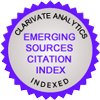
Hava durumu verilerinin kısa dönem elektrik yük tahmini üzerine etkileri
Murat Ünlü, Habil ErgenKocaeli Üniversitesi Mühendislik Fakültesi, Elektrik Mühendisliği Bölümü, KocaeliElektrik tüketim talebinin doğru bir şekilde tahmin edilmesi, enerji şirketleri için planlama ve kaynak yönetimi açısından büyük bir öneme sahiptir ve bu nedenle, hava durumunun elektrik yük tahminine olan etkilerinin tam olarak belirlenmesi gerekmektedir. Bu çalışmada, hava durumunun kısa dönem elektrik yük tahmini üzerindeki etkileri incelenmiştir. Catboost, LightGBM ve XGBoost gibi güçlü makine öğrenmesi modelleri ile geçmiş yük verileri, gün özellikleri ve tatil günleri gibi bağımsız değişkenlerle birleştirilerek elektrik yük tahmini yapılmıştır. İlk olarak hava durumu verileri hariç tutularak tahmin yapılmış, ardından hava durumu verileri eklenerek modellerin performansları karşılaştırılmıştır. Modellerin performans değerlendirmesi için ortalama mutlak yüzdesel hata (MAPE), ortalama karesel hata (MSE) ve ortalama mutlak hata (MAE) kullanılmıştır. Bir yıl boyunca modellerin günlük performansı ölçülmüştür. Hava durumu verilerinin veri setine eklenmesiyle birlikte MAPE değerlerinde LightGBM modelinde %3,213, XGBoost modelinde %3,404 ve CatBoost modelinde %6,671 performans iyileşmesi olduğu tespit
Anahtar Kelimeler: Kısa dönem yük tahmini, Hava durumu, Makine öğrenmesi, MAPE
The effects of weather data on short-term electricity load forecasting
Murat Ünlü, Habil ErgenKocaeli University, Engineering Faculty, Electrical Engineering Department, Kocaeli, TurkeyAccurate estimation of electricity consumption demand is of great importance for energy companies in terms of planning and resource management, and therefore, it is necessary to fully determine the effects of weather conditions on electricity load estimation. In this study, the effects of weather conditions on short-term electricity load estimation were investigated. Electric load estimation was performed by combining historical load data with independent variables such as day characteristics and holidays with a powerful machine learning model such as CatBoost, LightGBM and XGBoost. First, estimation was performed by excluding weather data, and then the performances of the models were compared by adding weather data. Mean absolute percentage error (MAPE), mean square error (MSE) and mean absolute error (MAE) were used to evaluate the performance of the models. Daily performance of the models was measured for a year. With the addition of weather data to the dataset, MAPE values were found to improve by 3.213% for the LightGBM model, 3.404% for the XGBoost model and 6.671% for the CatBoost model.
Keywords: Short-term load estimation, Weather, Machine learning, MAPE
Makale Dili: Türkçe



